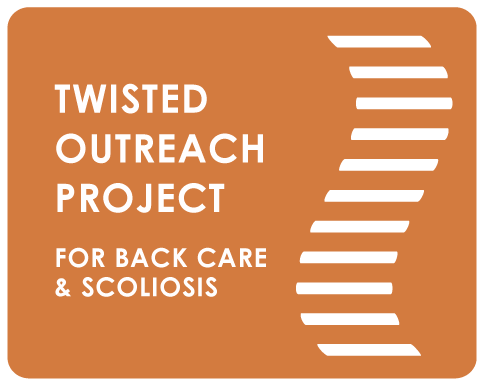JUNE 2019: SCOLIOSIS AWARENESS MONTH
Happy National Scoliosis Awareness month!
This year, TOPS is celebrating National Scoliosis Awareness Month in June by sharing a series of drawings that illustrate ‘Ten Simple Exercises for Scoliosis and Fusions’ one at a time over the course of the month.
These exercises, hand-drawn by director and teacher Martha Carter in her simple ‘stick-person’ drawing style she uses for all her classes, suggest easy movements that anyone can try at home, the gym, the yoga studio or, in the case of the first two, in the car, on a plane, or at your desk.
Some might call them physio or stretching, or a combination of both; others may call them meditation, and others are common yoga poses. Regardless of their origin, they are presented here with guidance to help people with scoliosis and / or fusions to find new awareness and sensation in their spines, as well as their whole body.
Regardless of your age or ability, the simplicity of each pose makes them accessible to everyone. They are meant to help each person calm their often over-charged nervous system, while also learning ways to relax, decompress, stretch, re-pattern, and strengthen the spine.
We suggest that you try one at a time, in order. Take time to really feel each one, observing how they may feel slightly different each time you do them. Even though they are simple, they can be very powerful and effective. By the end of the month, you can continue to do the ones that you find most helpful, and you can also choose to do them one after the other in order as a kind of ‘flow’ sequence.













